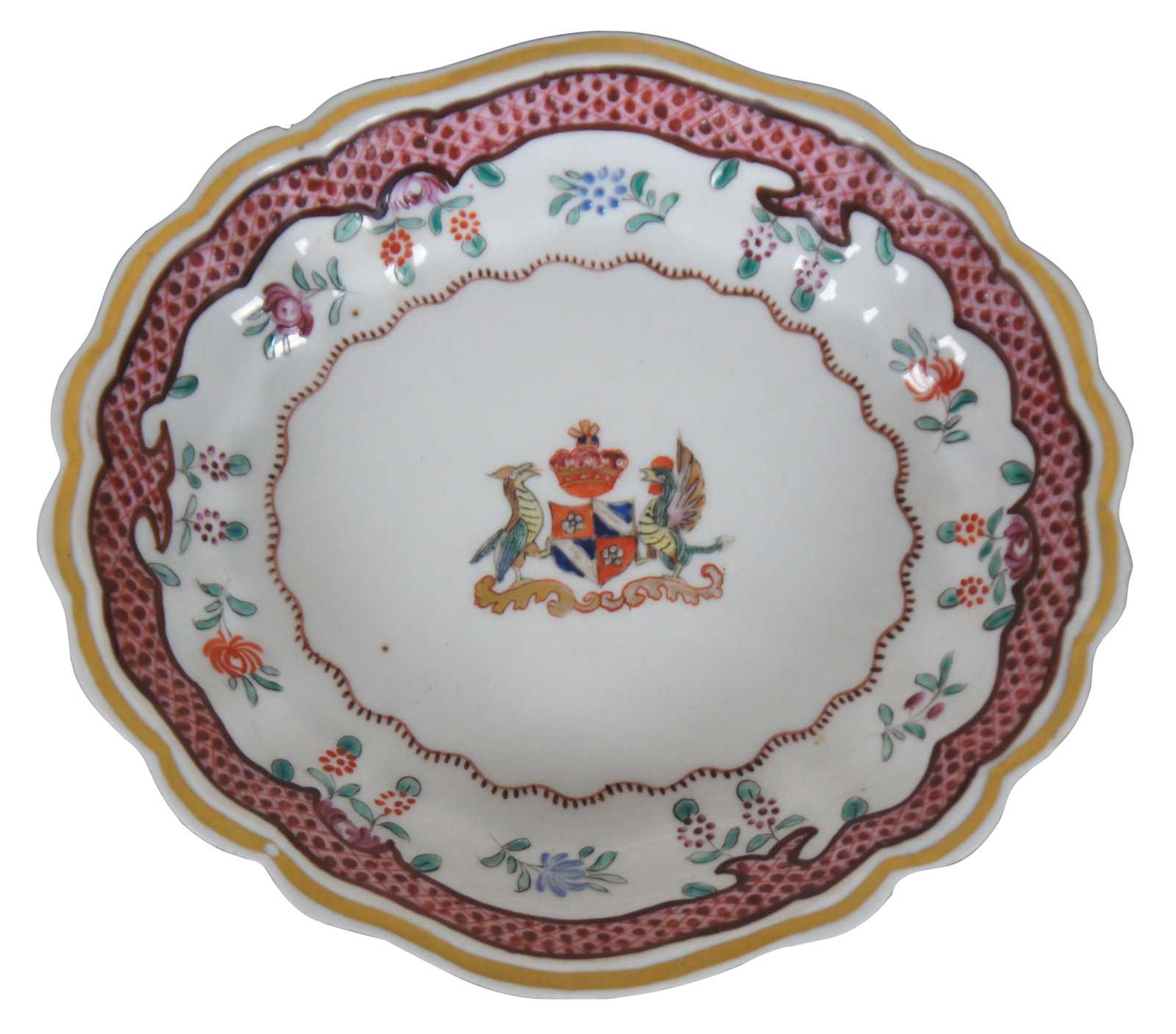
Shipping:
Free Shipping Included
Delivery:
Estimated 2-15 Business Days
Payments:
Credit Card, Check, Cash, PayPal, Apple Pay, Venmo
Returns:
30 Days 100% Money Back Guarantee, Buyer Pays Return Shipping
Description
Mid century (1941 to 1957) Edme Samson porcelain spoon dish or tray marked France with the Samson S mark, with hand painted lattice, floral and armorial crest with Phoenix bird crest and crown motif. Similar / in the style of England’s Lowestoft Curtis pattern and 18th century Chinese Export porcelain.
Edmé Samson (b Paris, 1810; d Paris, 1891), founder of the porcelain firm Samson, Edmé et Cie (commonly known as Samson Ceramics), was a famous copyist (and perhaps forger) of porcelain and pottery. The firm produced high-quality copies or imitations of earlier styles of porcelain, mainly 18th-century European and Chinese and Japanese porcelain, but also earlier styles such as Italian maiolica.
Samson began his career by making service and set piece replacements in the late 1830s. In 1845 he opened the ceramics firm Samson, Edmé et Cie at 7, Rue Vendôme (later Rue Béranger) in Paris, with the intention of supplying reproductions of ceramics on display in museums and private collections. The factory was moved to Montreuil, Seine-Saint-Denis in 1864 by Samson’s son, Emile Samson (1837–1913). The firm either drew inspiration from other factories, or directly copied their pieces. 18th-century designs from the factories of Meissen, Sèvres, Chelsea, Worcester and Derby were among the reproductions Samson, Edmé et Cie produced, among designs copied from the other major European factories.
During the 19th century, the collectors' market for antique fine china was considerable, and Samson’s firm reproduced ceramics in a breadth of styles including the faience and maiolica types of Italian pottery, Persian style dishes, Hispano-Moresque pottery (a blending of Islamic and European motifs, produced during the 13th to 15th centuries), plates in the FitzHugh pattern, as well as plates in the manner associated with Bernard Palissy. Also copied by the Samson firm were the early Qing dynasty famille rose and famille verte Chinese porcelains and the so-called ""Imari wares"", named for the Japanese port where a type of richly decorated porcelain made at Arita was shipped.[2] The firm exhibited at the International Exposition (1867) and the Exposition Universelle (1889).
Condition
Good Overall - Chipping to edge; staining to base.
Dimensions
6.5” x 6” x 1.125” (Width x Depth x Height)
You May Also Like